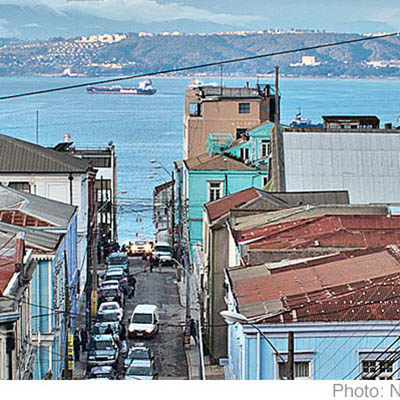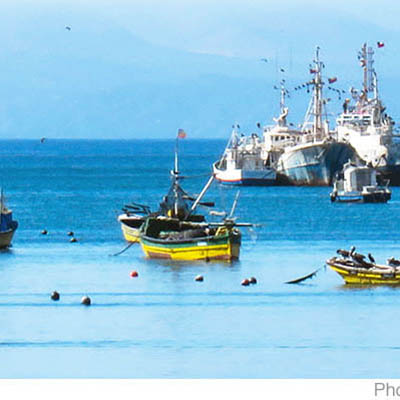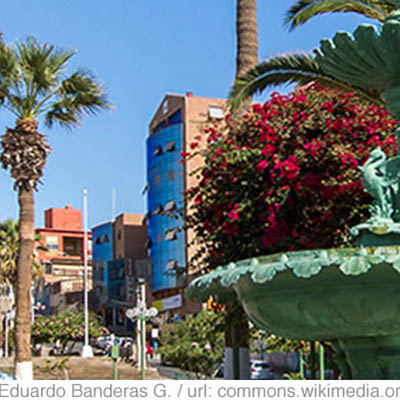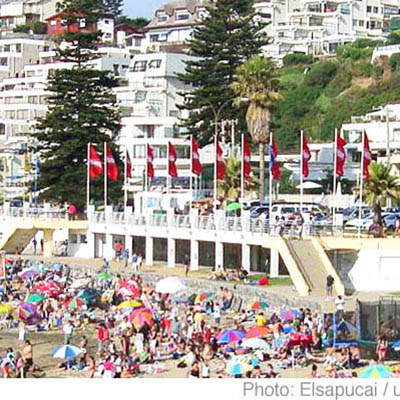
Beach resorts in Chile Monthly Climate Averages
To help you choose the best time to travel, you can find climate data below on the weather on the beach resorts in Chile .
| Month | Iquique | Antofagasta | ||
| day | night | day | night | |
| January | +25.3°C | +19.2°C | +23.2°C | +17.5°C |
| February | +25.5°C | +19°C | +23.3°C | +17.2°C |
| March | +24.9°C | +18.4°C | +22.3°C | +16.3°C |
| April | +22.7°C | +16.9°C | +20.4°C | +14.7°C |
| May | +20.7°C | +15.7°C | +18.7°C | +13.4°C |
| June | +19°C | +14.7°C | +17.3°C | +12.3°C |
| July | +18°C | +14°C | +16.5°C | +11.8°C |
| August | +18°C | +14.2°C | +16.6°C | +12.2°C |
| September | +18.8°C | +14.6°C | +17.2°C | +12.8°C |
| October | +20.1°C | +15.4°C | +18.2°C | +13.9°C |
| November | +21.7°C | +16.5°C | +19.8°C | +15.1°C |
| December | +23.7°C | +17.8°C | +21.7°C | +16.4°C |
Best places on the beach resorts in Chile
Temperature on the beach resorts in Chile
The table shows that the hottest months on the beach resorts in Chile are February and January, during which the average daytime temperature reaches 25.5°C and the nighttime temperature falls to 19°C.
The coldest months are July and August, when the daily average temperature falls to 16.5°C, and drops to + 11.8°C during the night.
Most booked hotels on the beach resorts in Chile
Search flights to Beach resorts in Chile
Best places on the beach resorts in Chile:
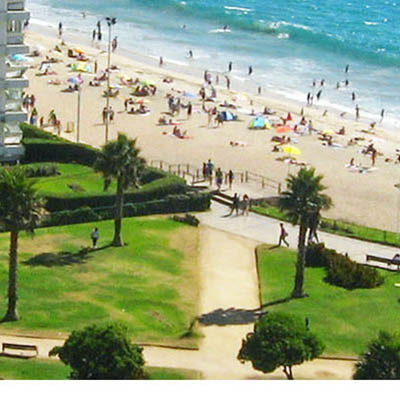
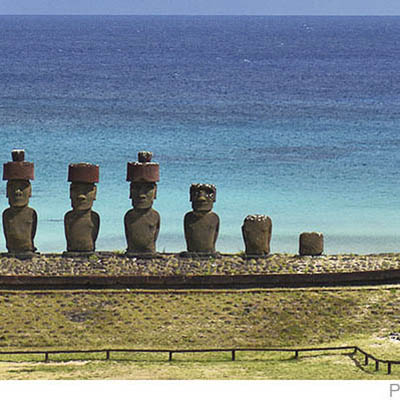
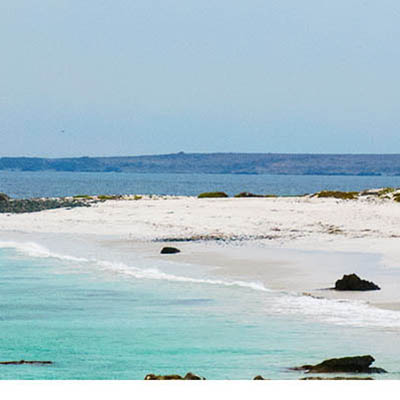
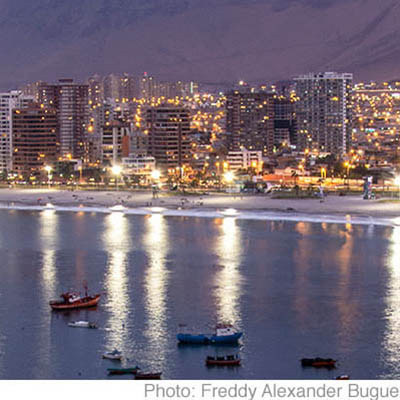

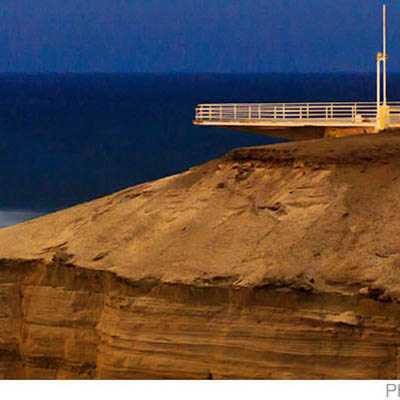
Most Popular Destinations in the World
Sea temperature
The highest average monthly temperature in the Pacific Ocean on the beaches of Iquique is in January and February and is 23°C.
The highest average monthly temperature in the Pacific Ocean on the beaches of Antofagasta is in January and February and equals 21°C.
on the beach resorts in Chile climate by month
Precipitation
The largest amount of rain falls on average in August and January, up to 1mm, and the least in January and February.

